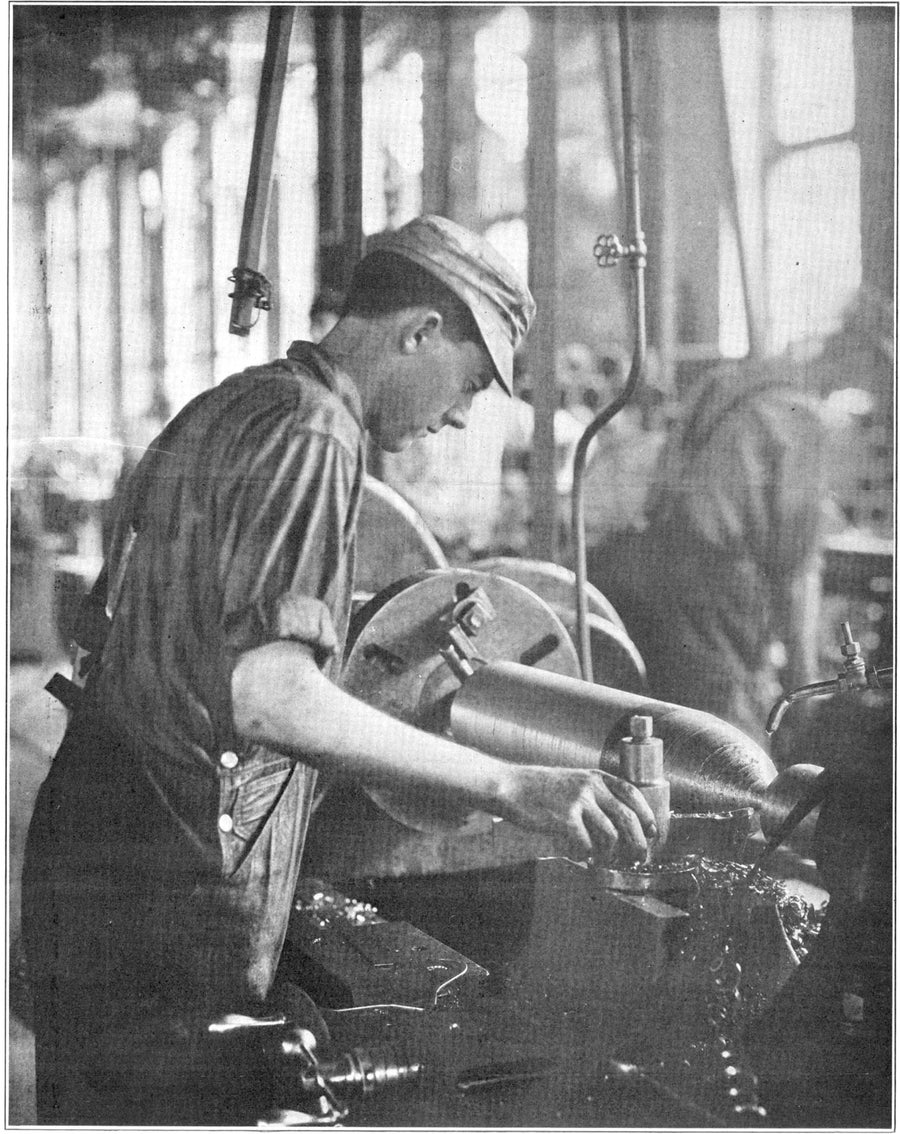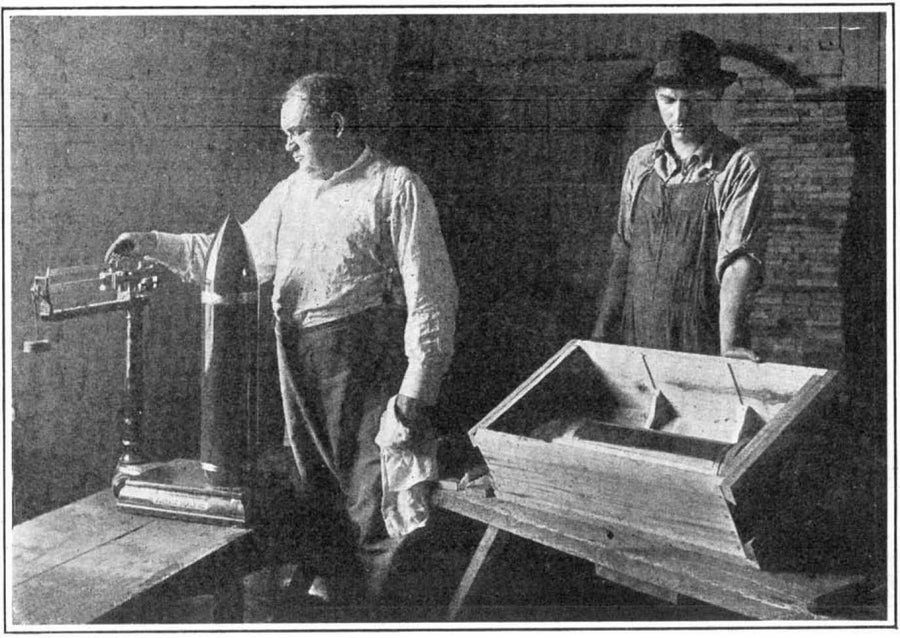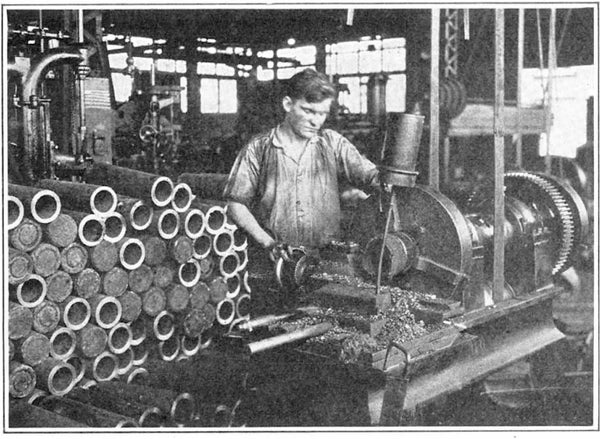This article was published in Scientific American’s former blog network and reflects the views of the author, not necessarily those of Scientific American
The Germans called the Great War “Materialschlachte”—a battle of materials. The armed struggle between industrially advanced European powers pitted their military forces and also their economic and industrial capacity against one another. The combatant countries took years trying to fully harness production capacity to build up supplies for the kind of warfare that evolved from 1914. The issue of Scientific American from 100 years ago today looks at the problem that the U.S.A. faced in mass-manufacturing an ever-greater quantity of artillery shells desperately needed on the battlefields of Europe:
“In the early days of the great war the American public was dazzled and astounded by the public reports of the contracts for enormous quantities of munitions, at unheard-of prices, that were being placed with our manufacturers by the European allies, and it was regarded as quite natural and fitting that European countries, in their condition of unpreparedness and dire necessity, should turn to America, with its reputation for mechanical ingenuity and ability, and its great factories, for assistance. American manufacturing organization and ability was to be pitted against that of Germany, and the result was contemplated with complacency. American energy and efficiency was to show its superiority over the supposedly stereotyped routing of continental shops; but the actual results have been a humiliating surprise, in many instances, both to the public and to many an optimistic contractor.”

Caption: A worker turns a six-inch shell on a lathe, shaving down the outside of it, in an American factory, 1916. Credit: Scientific American Supplement, December 23, 1916
On supporting science journalism
If you're enjoying this article, consider supporting our award-winning journalism by subscribing. By purchasing a subscription you are helping to ensure the future of impactful stories about the discoveries and ideas shaping our world today.
“Many companies, attracted by the prospect of big profits, and relying on their shop equipment, undertook the manufacture of unfamiliar products, in the way of arms and ammunition, only to meet with failure. Of course, there are many companies whose regular work was the production of arms, and these, for the most part, have been successful in making the needed supplies of the desired quality, but even in these establishments there have been some that have been carried off their feet by the unprecedented demand, and their inability to handle the immensely increased factories that they have hurriedly erected for the purposes of these special contracts. But the actual gross results of all these loudly advertised ammunition contracts has been practically insignificant.”
Between 1914 and 1918 every country involved in the war as a participant or a supplier dramatically increased shell production. In Germany, shell production of all calibers increased from 343,000 a month in 1914 to 11,000,000 a month in 1918 (according to Salavrakos, below). In Britain in 1915, the “shell scandal” erupted after it became clear that the high rate of artillery fire on the battlefield could not be sustained by the limited production of shells back home. From 1914 to 1918, Germany and Austria-Hungary produced up to 680 million shells and the industries of the Allies France, Britain, Russia (to October 1917), Italy, the U.S. and Canada, produced up to 790 million shells (the statistics vary greatly). The U.S. produced between 30 million and 50 million of these shells.

Caption: Finished shell, six-inch caliber, painted and with nose cap in place, is carefully weighed before being packed away in a shipping crate. Credit: Scientific American Supplement, December 23, 1916
Although the Central Powers produced—more or less—as many shells as the Allies, the longer perspective from historians suggests that defects in the organization of armament industries within the context of the economic base of the country contributed to the downfall of Germany and Austria-Hungary. As the war progressed, the Central Powers countries were unable to properly harness their industrial base efficiently, leading to chronic and critical shortages in other industries and also for their civilian populations. That case is convincingly made by Alexander Watson of Goldsmiths, University of London, in his 2014 book Ring of Steel: Germany and Austria-Hungary in World War I (Basic Books; Watson won the prestigious Wolfson History Prize for the book). That argument is also statistically supported by Dr. Ioannis-Dionysios Salavrakos of the European Parliament, in his article “Τhe Defence Industry as an Explanatory Factor of the German Defeat During World War I: Lessons for Future Conflicts” in International Journal of History and Philosophical Research, Vol. 2, No. 1. pages 1–34, March 2014 (www.ea-journals.org).
-
The views expressed are those of the author and are not necessarily those of Scientific American.
Our full archive of the war, called Scientific American Chronicles: World War I, has many articles from 1914–1918 on manufacturing during the First World War. It is available for purchase at www.scientificamerican.com/products/world-war-i/
